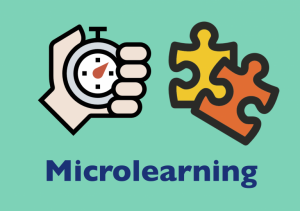
Free eBook: Blended Learning
Blended Learning. Solved in one solution. Get the right blend of modern and traditional learning. Why Blended Learning is important? What works for one employee
With remote work becoming increasingly popular post-COVID, training remote employees has become a crucial aspect for organizations. But, this new mode of training comes with its own set of challenges. From accommodating different learning styles and pace to balancing work and training responsibilities, L&D managers must be equipped with the right strategies and tools to effectively train their remote workforce.
Meeting the different learning needs and speed of employees is one of the main problems in remote employee training. To avoid this, L&D supervisors should provide a range of training methods, such as interactive webinars, video tutorials, and printed manuals. The form of learning that best suits their demands and learning preferences can then be chosen by the employees.should offer a variety of training techniques, including interactive webinars, video tutorials, and printed manuals, to get around this. Employees can then select the type of learning that best meets their needs and learning style.
Leaders can help employees balance work and training responsibilities by offering flexible training options, such as on-demand videos and self-paced courses. For instance, employees can choose to watch training videos during breaks or at a time that fits their schedule, ensuring they can meet both work and training obligations efficiently.
Managers can ease the transition from in-person to remote learning by offering a user-friendly and well-equipped platform for remote training. This includes making sure all required resources are accessible to employees, such as instructional videos, training materials, and a direct line of communication with trainers. This way, employees have everything they need to succeed in a remote learning environment.
In conclusion, leaders can overcome the challenges of training remote employees by adopting the right strategies and tools. By referring to our previous articles, “Strategies for Implementing Remote Employee Training” and “5 Remote Training Tools to Engage Your Remote Employees,” they can gain even more insights into successfully training their remote workforce. With the right approach, remote employee training can be just as effective and engaging as traditional in-person training.


Blended Learning. Solved in one solution. Get the right blend of modern and traditional learning. Why Blended Learning is important? What works for one employee
Want to master virtual onboarding? Download this free book now! Learn the basics, benefits, timing, key players and strategies for success. Don’t miss out!


In the fast-paced realm of corporate Learning & Development, it’s imperative to keep abreast of emerging strategies that can reshape the way we train employees. Among the most significant innovations in the field is the concept of “Adaptive Learning Systems.” These systems are not just changing the game; they’re altering the rules, allowing Learning & Development professionals to deliver highly personalized training for employees while setting new standards for adaptive e-learning in organizations.

In today’s fast-paced corporate world, Learning and Development (L&D) professionals face a unique challenge. They must equip employees with new skills and knowledge while ensuring their well-being in a demanding work environment. Mindful Learning offers an innovative solution to this challenge. In this article, we’ll explore the concept of Mindful Learning and how it fosters well-being in the corporate L&D space. We’ll also delve into Mindful Training Techniques that can be applied to create a more productive, balanced, and engaged workforce.

In the fast-paced world of corporate learning & development, time is both a precious resource and a common challenge. Learning & Development (L&D) professionals often find themselves balancing myriad tasks, from designing training programs to fostering employee growth. However, amid this hustle, the concept of holistic time management emerges as a beacon of well-being and productivity. This blog post embarks on a journey to explore holistic time management, uncovering strategies that promote well-being in the workplace. Our goal is to provide L&D professionals with actionable insights and techniques to lead healthier, more fulfilling professional lives.

In the realm of corporate learning and development, the winds of change are blowing stronger than ever. Learning & Development (L&D) professionals are at the forefront of these transformative times. The hybrid workplace, born out of the challenges posed by the “new normal,” demands a fresh perspective on leadership and team management. In this comprehensive blog post, we embark on a journey to explore the multifaceted concept of hybrid leadership. Our goal is to provide L&D professionals with not just a theoretical understanding but actionable insights and techniques that empower them to thrive in this evolving work landscape.

In today’s ever-evolving world of Learning and Development (L&D), the call for sustainability has never been more urgent. As Learning & Development Professionals, we have a unique opportunity and responsibility to not only foster professional growth but also to do so in an environmentally conscious way. In this comprehensive article, we’ll explore Sustainable Training Practices, delve into the realm of Eco-Friendly Corporate Learning, and uncover the value of Environmentally Friendly Learning Programs. Let’s embark on a journey towards a greener, more sustainable future for corporate training.

In the fast-evolving realm of Learning and Development (L&D), staying at the forefront is critical. As learning professionals, we constantly seek innovative ways to captivate, motivate, and empower our learners. A dynamic trend that has taken L&D by storm is gamification. In this comprehensive article, we’ll take a deep dive into the world of Gamification in Learning and Development, exploring the fascinating realm of Innovative Training Games and the transformative potential of Gamified Training Solutions.

In the fast-paced world of corporate Learning & Development, staying at the cutting edge is essential. One powerful tool that is transforming the way we approach training is the application of neuroscience. Learning & Development professionals are beginning to harness the insights from brain science to create brain-friendly training methods that significantly boost learning outcomes. In this comprehensive article, we’ll explore the exciting intersection of neuroscience and corporate training, uncovering how understanding the brain can revolutionize your approach to employee development.

The year 2020 brought about a profound transformation in the way we work and communicate. The global pandemic forced organizations and individuals to adapt rapidly to a new reality, one where remote work and virtual collaboration became the norm. This paradigm shift necessitated a reevaluation of how we conduct meetings and engage in teamwork. For Learning and Development professionals mastering virtual collaboration emerged as a critical skill for fostering productivity and maintaining business continuity.

In today’s rapidly evolving corporate landscape, the significance of employee well-being, particularly mental health, has taken center stage. Learning & Development professionals are increasingly recognizing the critical role they play in fostering a mentally healthy workplace through training. In this comprehensive article, we will delve deeper into the importance of mental health training for employees, explore how Learning & Development can contribute to well-being in the workplace, and discuss the role of well-being training in creating a healthier, more productive workforce.

In the fast-paced world of corporate learning and development, one aspect that is gaining increasing recognition is the vital role of workplace wellness. Learning and development professionals are realizing that a healthier and happier work environment directly contributes to employee productivity, engagement, and overall success. In this article, we will delve into the essential components of mastering workplace wellness, offering valuable insights and strategies that Learning & Development professionals can implement to promote employee well-being. Let’s explore workplace wellness strategies, employee well-being programs, creating a healthier work environment, initiating employee wellness initiatives, and managing workplace stress effectively.

In today’s rapidly evolving corporate landscape, remote work has become a norm, and with it, the need for effective remote workforce training has surged. Learning & Development professionals are at the forefront of this transformation, seeking innovative ways to ensure that distributed teams receive the training they need to excel in their roles. In this comprehensive article, we will delve deeper into the best practices and virtual employee training techniques that can help you create engaging online training programs for your remote workforce.

In today’s rapidly evolving corporate landscape, Learning & Development (L&D) professionals face an ongoing challenge: how to enhance training programs and elevate learning outcomes in a way that keeps pace with change. Fortunately, there is a cutting-edge approach gaining prominence in the field: the integration of cognitive learning techniques with the principles of neuroscience. This comprehensive article will take an in-depth look into the captivating world of neuroscience in learning and explore how it can be leveraged to create more effective training methods. We’ll provide actionable insights, strategies, and unique perspectives to equip you for success in the dynamic world of L&D.

In today’s dynamic corporate landscape, where remote work and flexibility are the new norm, Learning & Development professionals face the exciting challenge of adapting training methods to meet the needs of a mobile-first workforce. Mobile learning, or mLearning, has emerged as a transformative approach to corporate training, offering numerous advantages for both organizations and employees.

In the dynamic realm of corporate Learning & Development (L&D), the establishment of a robust learning culture is essential for achieving sustained growth and adaptability. In this comprehensive article, we will delve into the profound significance of creating a learning culture in large organizations, with a specific focus on strategies that Learning & Development professionals can employ. We’ll explore the multifaceted aspects of this endeavor, offering practical insights and actionable techniques to cultivate a learning-centric corporate culture that not only fosters professional development but also nurtures employee growth and engagement.

In the ever-evolving field of corporate Learning & Development (L&D), the surge in remote work has brought about profound changes, shaping corporate learning strategies. As L&D professionals navigate this transformative era, it’s essential to recognize how remote work influences corporate learning and explore innovative solutions, including virtual learning for remote teams and effective remote employee training solutions.

In today’s rapidly evolving corporate landscape, Learning & Development (L&D) professionals are faced with the multifaceted challenge of delivering training that meets the diverse needs of employees across various roles and skill levels. Traditional one-size-fits-all learning models are increasingly inadequate in catering to the unique learning requirements of modern workforces. The convergence of artificial intelligence (AI) and data analytics has ushered in a new era, offering unprecedented opportunities to transform conventional learning approaches into dynamic and personalized learning journeys.

In the fast-paced and ever-evolving landscape of corporate Learning & Development (L&D), the quest to unlock team flow has become an essential goal for organizations seeking to maximize performance and collaboration.

In the fast-paced world of corporate learning and development (L&D), a one-size-fits-all approach is no longer sufficient. To meet the diverse needs of learners and maximize their potential, personalized learning journeys have emerged as a powerful solution. This article explores the significance of personalized and adaptive learning, delves into the concept of learning journeys, and provides actionable tips for implementing personalized L&D programs

In today’s rapidly evolving business landscape, learning and development (L&D) professionals face unique challenges in empowering themselves to excel in their roles. As the learning landscape undergoes significant transformations, the need for skills development among L&D professionals becomes paramount. This blog article aims to shed light on the challenges in the L&D industry, explore the rapidly evolving learning landscape, provide actionable tips to empower L&D professionals for success, and delve into the critical role of continuous learning in their journey.

In today’s fast-paced and ever-changing business landscape, the significance of training and development in organizations has reached new heights. Learning & Development Professionals are at the forefront of empowering employees with the skills they need to adapt to the changing work environment successfully. This blog article delves into the transformative power of learning in the modern workplace, offering unique insights and actionable tips for professionals to excel in their roles and personal development.

In today’s fast-paced corporate environment, Learning and Development (L&D) professionals face the challenge of ensuring effective training programs that engage employees and yield maximum results. One innovative solution that has gained significant traction is microlearning.

In the fast-paced world of learning and development, the training industry has undergone significant transformations over the years. From traditional classroom settings to modern digital platforms, the evolution of training methods has revolutionized the way we acquire knowledge and skills. In this article, we will delve into the historical changes in learning and development, explore the future innovations in training, and provide unique insights, actionable tips, and techniques for learning and development professionals.

In today’s fast-paced world, where professional landscapes are constantly evolving, embracing lifelong learning has become imperative for learning and development professionals. Lifelong learning is the key to personal growth, career advancement, and staying ahead in the competitive job market. In this article, we will delve into the strategies and benefits of lifelong learning while providing unique insights, actionable tips, and techniques that will empower learning and development professionals in their pursuit of success.

In the fast-paced corporate world, engaging employees and driving performance are top priorities for Learning & Development professionals. One innovative approach that has gained significant attention is gamification in learning.

In the 21st century, the role of Human Resources Management has evolved significantly, requiring professionals to specialize in knowledge and talent management. To thrive in the knowledge economy, organizations must prioritize effective succession planning and employee retention strategies. This blog article aims to provide learning and development professionals in Western Europe and North America with unique insights and actionable tips on optimizing talent management, ensuring a seamless succession planning process, and implementing employee retention strategies. By focusing on best practices and leveraging talent management solutions, organizations can stay ahead in the dynamic world of HRM.

In today’s corporate landscape, organizations face the unique challenge of managing a multigenerational workforce. Learning & Development professionals must adapt their strategies to bridge the generational gap and design effective training programs. This article explores key insights and actionable techniques to successfully address this challenge, ensuring optimal learning outcomes for different generations. Let’s delve into the realm of multigenerational workforce training, bridging the generational gap in learning, and designing learning programs for different generations.

Welcome to the era of modern employee onboarding, where organizations are reimagining traditional practices to create a seamless and engaging experience for new hires. In this comprehensive blog article, we will delve into employee onboarding best practices, innovative onboarding strategies, effective employee orientation techniques, and onboarding process improvement. Whether you’re a seasoned Learning & Development professional or just starting out in your career, this article will provide you with valuable insights, actionable tips, and fresh perspectives to enhance your employee onboarding programs.

In today’s rapidly evolving business landscape, Learning and Development (L&D) professionals play a critical role in ensuring that employees have the necessary skills and knowledge to thrive. With the emergence of Artificial Intelligence (AI), training delivery has undergone a significant transformation

With remote work on the rise post-COVID, training remote employees has become a crucial aspect for organizations. However, this new mode of training comes with its own set of challenges, from accommodating different learning styles and pace to balancing work and training responsibilities, adjusting to a new learning environment, and ensuring access to adequate and relevant learning content. But, with the right approach and tools, L&D managers can effectively train their remote workforce.

As remote work becomes increasingly prevalent, it’s crucial for companies to find effective ways to train their employees remotely. In this article, we will present five remote training tools. We will discuss their potential benefits and drawbacks. Each tool offers unique advantages, and the best one for a particular situation will depend on the needs of the trainees.

As the global workforce becomes increasingly distributed, many companies are turning to remote employee training as a way to upskill their employees.

Creating an effective employee training program is essential for the success of any organization. Not only does it help new hires quickly become productive members of the team, but it also helps existing employees stay up to date on the latest industry trends and techniques. However, developing a training program that works can be a challenging task. Here are important tips for creating an effective employee training program: